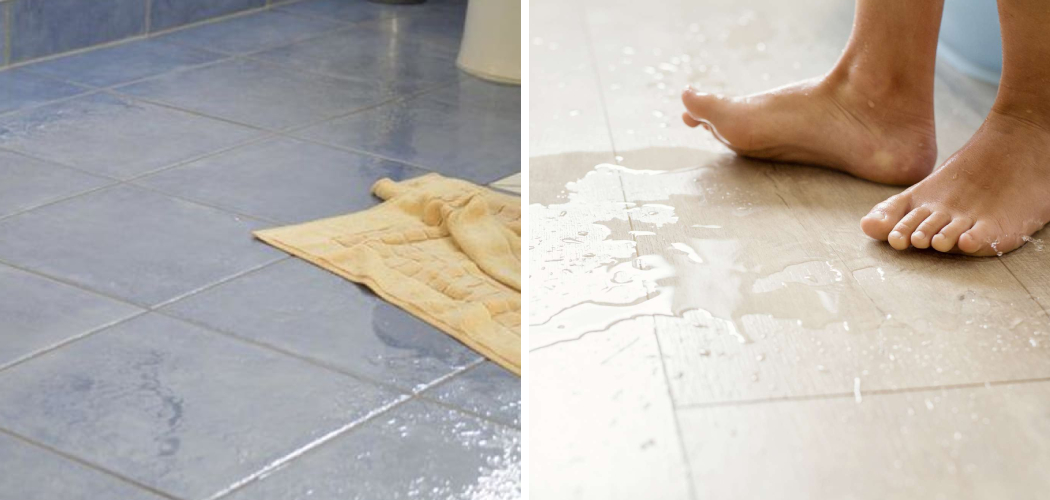Nothing can ruin a shower like slippery tiles! One wrong step and you’re left cursing the tile manufacturers, vowing to never get back in your tub or shower again. But not all hope is lost—avoiding slipping on wet bathroom floors isn’t as impossible as it seems.
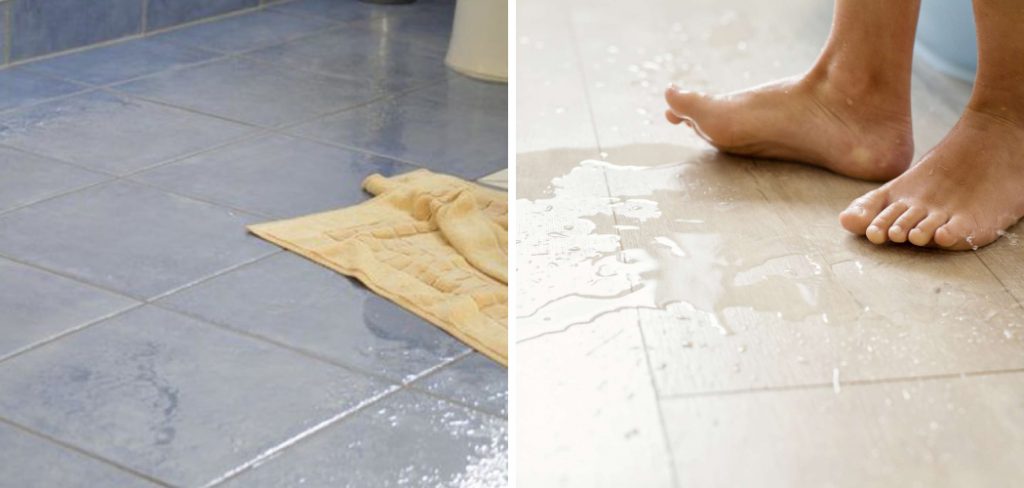
In this blog post, we’ll provide simple steps on how to avoid slippery tiles in bathroom so that you can take them to protect yourself and your family from the dangers of slippery tiles by introducing anti-slip solutions that will keep your tiled areas safe for years to come. Read on to learn how easy preventative maintenance can reduce the risk of slips and falls!
Step-by-step Guidelines on How to Avoid Slippery Tiles in Bathroom
Step 1: Choose the Right Tiles
When shopping for bathroom tiles, look for non-slip or anti-slippery glazed ceramic or porcelain tiles. These types of tiles have been designed with a special finish to reduce the risk of slipping in wet areas. That said, some tiles may still be slippery when wet, even if they have an anti-slip finish.
You can test the tiles before you buy them by placing a wet foot on the tile and seeing how much traction it provides.
Step 2: Apply a Non-Slip Surface Treatment
If you already have slippery tiles in your bathroom, you can apply a non-slip surface treatment to create more traction. There are several products available on the market, such as enamels and epoxy coatings that are designed to reduce the risk of slipping.
It’s best to check with a professional to make sure you are using the right product for your tile type. But keep in mind that these treatments need to be reapplied periodically, as they can wear off over time.
Step 3: Place Non-Slip Mats in the Shower and Tub Areas
Non-slip mats are essential for bathrooms that have slippery tiles, as they will provide additional traction underfoot. The mats should be placed in areas where there is potential for water to pool, such as the shower or tub area.
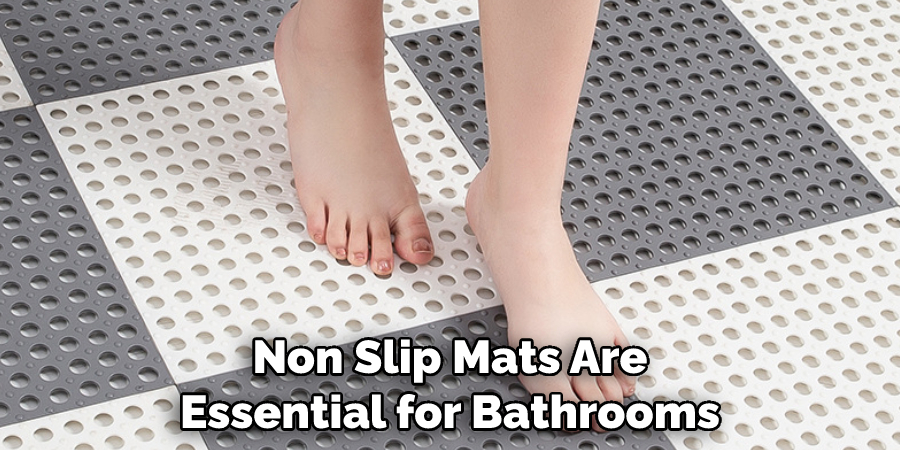
So, make sure to invest in quality mats that are made of heavy-duty rubber material and have a strong grip. Otherwise, the mats may move around as you walk on them and create a slipping hazard.
Step 4: Add a Non-Skid Strips to Stairs Edges
If you’re looking to improve safety on steps leading up to your bathroom, consider adding non-skid strips to the edges of each step. This will help prevent slips and falls when navigating stairs with wet feet. If you are using stair carpeting, make sure it is made of a non-slip material as well. But if you have hardwood or tile stairs, non-skid strips can provide the extra traction needed to prevent falls.
Step 5: Install Anti-Slip Treads
Anti-slip treads are a great way to add traction to slippery stairs. They come in a variety of materials, including rubber and metal, and can be applied directly onto the steps. That said, treads may not be suitable for all materials, so make sure you check with a professional if you plan on installing them.
But if you decide to go ahead and install them, make sure that the treads are securely attached, as loose ones can create a slipping hazard.
Step 6: Place Non-Slip Rugs on the Bathroom Floor
In areas where there is potential for water to collect, such as around the toilet or sink, consider placing non-slip rugs to help provide extra traction underfoot. This will also help protect your tile from damage caused by slipping and falling. If you are using a rug on the bathroom floor, make sure that it is securely attached to avoid any tripping hazards.
Step 7: Keep Floors Dry at All Times
One of the most effective ways to reduce slips and falls in bathrooms with slippery tiles is to keep floors dry at all times. Make sure you regularly mop up any spills or excess water on the floor and use mats and rugs to absorb any additional moisture that collects. That way, you’ll ensure that your tile stays dry and creates far less risk of slips and falls.
Step 8: Check for Loose Tiles
If you have loose tiles in your bathroom, they can easily become a slipping hazard. Make sure to check for loose tiles from time to time, and if necessary, have them professionally secured back into place. That way, you can prevent any slippery and dangerous surfaces in your bathroom. If you notice any large cracks or broken tiles, consider replacing them with non-slip versions to ensure optimal safety.
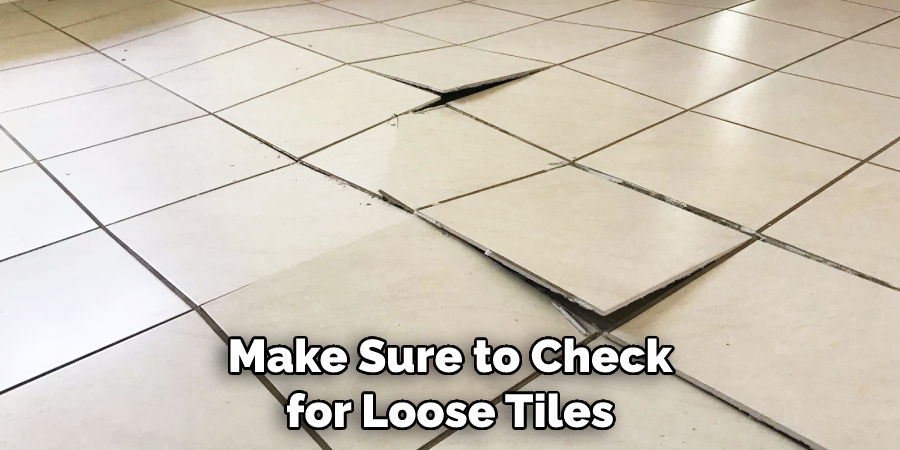
Step 9: Remove Soap Build-up
Soap residue can accumulate on tile over time, creating a slippery surface when wet. To keep your tiles safe from slips and falls, make sure to clean soap build-up on a regular basis using an appropriate cleaning product. It’s also important to invest in a squeegee or towel rack for your shower to prevent soap scum from forming.
Step 10: Use Anti-Slip Tape
If you’re looking for an extra layer of protection against slips and falls, consider using anti-slip tape. This tape is designed to provide a greater level of traction in wet areas. Make sure to use tape designed for bathroom tiles and apply it in areas where water is likely to pool, such as the shower or tub. That way, you can help ensure that your tiles remain slip-free.
Step 11: Make Sure the Lighting Is Adequate
Poor lighting can make seeing potential slipping hazards in your bathroom difficult. Make sure that the area is well-lit so you can easily spot any potential problems with slippery tiles or other surfaces.
It’s also important to make sure that light switches are easily accessible and located within reach in case of an emergency. So if you want to ensure that your bathroom is safe from slips and falls, make sure to keep these tips in mind.
Step 12: Wear Appropriate Footwear
Wearing the right shoes in the bathroom can help reduce your risk of slipping and falling on slippery tiles. Look for shoes with non-slip soles or rubberized grips, as these will provide the most traction. After all, it’s important to remember that no amount of preventive measures can completely eliminate the risk of slipping and falling in a bathroom.
So be sure to stick to these steps in order to ensure that your bathroom is as safe as possible. By following these steps on how to avoid slippery tiles in bathroom, you can help reduce the risk of slipping and falling on slippery tiles in your bathroom. Remember to regularly check and clean surfaces to keep them safe and dry, and wear appropriate footwear when navigating wet areas.
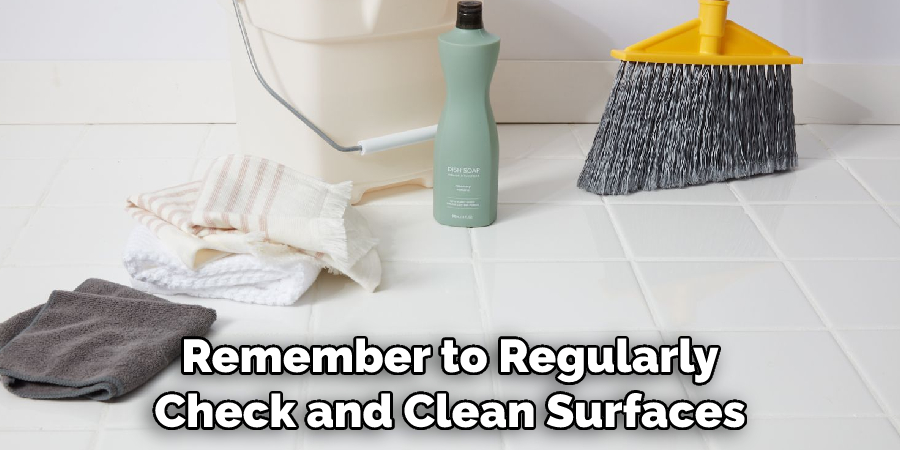
With a few simple precautions, you can make sure that your bathroom floor remains a safe and secure environment.
Why Do You Need to Avoid Slippery Tiles in the Bathroom?
Slippery tiles in the bathroom can be a serious safety hazard. Wet surfaces can cause slips and falls that result in severe injury or even death. Additionally, slippery tiles can cause damage to the tile itself, resulting in costly repairs and replacement. By avoiding slippery tiles in the bathroom, you can reduce the risk of slips and falls, as well as protect your bathroom floor from expensive damage.
So, put these steps into action and make your bathroom a safer place. With the right precautions and regular maintenance, you can ensure that your bathroom remains a safe and secure environment.
Frequently Asked Questions
Q: What Can I Do to Make My Bathroom Tiles Less Slippery?
A: You can reduce the risk of slipping and falling on slippery tiles by applying a non-slip surface treatment, placing non-skid mats in areas where water might pool, adding anti-slip treads to stairs edges, using anti-slip tape, and wearing appropriate shoes. Additionally, you should make sure that the area is well-lit and keep surfaces clean and dry at all times.
Q: How Often Should I Check for Loose Tiles in My Bathroom?
A: It’s important to periodically check for loose tiles in your bathroom as they can easily become a slipping hazard. If necessary, have them professionally secured back into place.
Q: How Do I Clean Soap Build-up on My Tiles?
A: You can clean soap build-up on tiles using a mild detergent or cleaning product. Make sure to follow the instructions and keep surfaces clean and dry at all times.
Q: How Can I Make Sure That the Lighting Is Adequate?
A: Installing additional lighting in your bathroom can help ensure that the area is well-lit and free of potential slipping hazards. You should also make sure to regularly replace light bulbs if they are due for an upgrade.
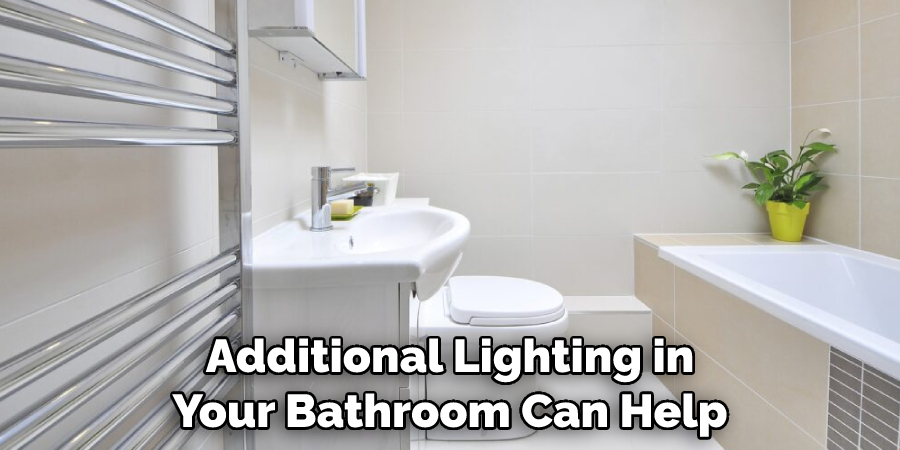
Conclusion
Taking the necessary precautions to protect your safety in the bathroom is a wise choice. Even if you’re confident with regards to handling slippery tiles, accidents can still happen at any time and it can be difficult to know what caused them.
Utilize these tips for preventing falls due to slippery surfaces and keep the floor in your bathroom dryer and safer on a regular basis. Additionally, depending on the layout of your bathroom, you may want to consider adding rubber mats, bathmats or carpets as part of your proactive approach.
By keeping the upkeep of your tiles with products like a pumice stone as well as applying nonslip sealants every few years, you may be able to prevent yourself from falling in slippery areas throughout the house. Ultimately, ensuring that all dangerous surfaces are safe for everyone involved is key! Now you know everything about how to avoid slippery tiles in bathroom.

